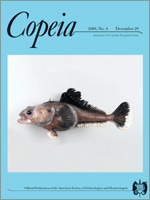When molecular phylogeography results in the discovery of hidden diversity, this diversity is often labeled as cryptic. Few studies have gone back to the morphology to determine whether or not this molecular diversity is in fact detectable at the morphological level. The Notropis rubellus species complex has a widespread distribution in freshwater streams of eastern North America. Recent molecular studies have identified up to seven allopatric clades, suggesting that there may be morphologically cryptic diversity within the group. This study uses traditional meristics and geometric morphometric methods to test molecular hypotheses of cryptic diversity within the species complex. Meristic data and a principal component analysis of geometric morphometric data supported the cryptic hypothesis. Canonical variates analyses (CVA), however, were able to detect statistically significant, clade-specific morphological variation, suggesting that in this case, cryptic diversity was an artifact of the detection method. CVA thus provided a useful tool for identifying subtle or complex shape variation. However, morphological variation within the N. rubellus species complex was undetectable without a pre-existing molecular hypothesis.
How to translate text using browser tools
29 December 2009
The Utility of Molecular Hypotheses for Uncovering Morphological Diversity in the Notropis rubellus Species Complex (Cypriniformes: Cyprinidae)
Peter B. Berendzen,
Wendy M. Olson,
Scott M. Barron
ACCESS THE FULL ARTICLE





